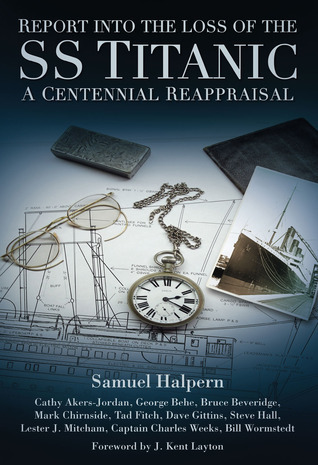What do you think?
Rate this book


256 pages, Hardcover
First published November 1, 2011
The first watertight bulkhead, also called the collision bulkhead. It extended up from the bottom of the hull at frame 134F to the underside of E deck. The lower portion of this bulkhead formed the forward end of the foremost double bottom tank, and the after bulkheads of both the forepeak tank and the chain locker. At E deck, the bulkhead was stepped forward to frame 140F and then continued up to the underside of C deck as a structural element, but was made watertight to the underside of D deck only.